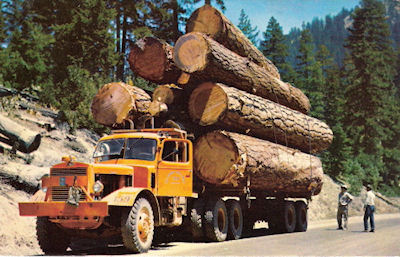Separate Issues from Themes
Issue Management
In Wyoming, a logging company was planning to harvest mature timber off the west side of a mountain. Timber had been harvested in the same area numerous times in the past. Company executives didn't anticipate any problems in being able to complete the harvesting project.
 To their surprise, the residents of the community on the east side of the mountain began to oppose the harvesting operation. Had the company accepted the position statement, "The townspeople are opposed to the timber harvesting operation," as the real issue, the company would never have been able to respond appropriately, because the only action that could be taken to respond to the position statement was to cancel the project.
To their surprise, the residents of the community on the east side of the mountain began to oppose the harvesting operation. Had the company accepted the position statement, "The townspeople are opposed to the timber harvesting operation," as the real issue, the company would never have been able to respond appropriately, because the only action that could be taken to respond to the position statement was to cancel the project.
In order to probe the issues, the company invited the public to respond to the project, giving the reasons for their positions. A public meeting was held (known in the business as the "gladiator arena") and the persons in attendance claimed they were opposed to the project because:
- The harvest would cause soil erosion.
- Removing the trees would damage the habitat for the elk and deer.
- The soil erosion would cause siltation in the streams and severely damage the water quality.
- The aesthetics of the area would be ruined.
The company took the issues and addressed them technically.
- Timber would be harvested on areas with no more than a 10% slope.
- The area would be selectively cut, leaving plenty of vegetation to protect the soil.
- The harvest would open up the stand of trees, allowing more sunlight to reach the forest floor causing more grass and shrubs to grow, improving the deer and elk habitat.
- Because the soil erosion would be near zero, there would be no siltation of the stream.
- The harvest would be designed by a landscape architect; edges of the harvest area would be feathered to reduce visual contrast; the harvest area boundaries would follow the natural fall line of the mountain so there would be no straight lines on the landscape.
When the company went back to the public, they found that the people were still opposed to the harvest. Not only were they still opposed, but their reasons were now different.
- The harvest would disrupt recreation and the tourist trade.
- The noise would disturb the wildlife.
- etc.
The company realized it had not yet identified the real - or grounded - issue behind the opposition. To probe further, the company sent a person skilled at identifying and working with informal networks to find out what the real issue(s) was and who owned it, so they could respond effectively. The person, within one week, identified three networks that shared the same issue:
- Mothers of small children living along a certain street.
- Merchants along that same street.
- City officials.
All three networks shared the issue that the "logging trucks rolling through town" would:
- Endanger children's lives.
- Stir up dust.
- Discourage customer parking along the street in front of the businesses.
- Increase street maintenance costs.
Although the issue of the logging trucks had never surfaced formally, individuals within three key networks held it. The company responded by changing the designated haul routes of the trucks. Although the new haul route would be 15 miles further, it would avoid the town altogether. The information of the change in the haul route was fed directly into the three networks informally by a respected company official and within a few days the opposition to the proposed harvest totally melted away and the company was able to proceed. The formal opposition who had wanted to stop the cutting for their own narrow and vested reasons lost their grass roots support and were unable to overcome the company's technical arguments once emotionalism was removed by finding the real issues and their owners.
The success of the management of the issue was due to:
- Not accepting the stated position of the verbal few as the issue.
- Probing the "what, where, why, and who's" of the issues, formally and informally.
- Identifying who owned the issues and whether they had shared geography.
- Identifying the subjects of interest upon which actions could be taken.
- Verifying the issues directly with the networks.
- Feeding the issue response directly back to the issue owners.
Probing the issue for the WHO, WHAT, and WHY is vitally important to successful strategic issues management.
Cobalt Web Designs